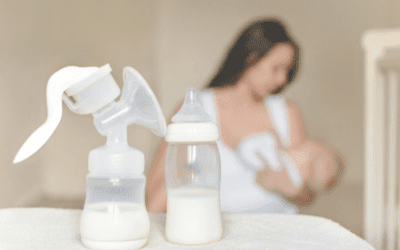Why do I need to read this article about breast engorgement anyway?
Breast engorgement occurs around day three postpartum. Because of this, engorgement is not always discussed with new moms before they go home from the hospital. It’s not that it’s meant to be missed. There is just so much teaching to cram in the first 24-48 hours before a mom and baby dyad are discharged. Between the frequent feedings, impromptu family visits, assessments, meals, and what little amount of sleep new parents can grab, there isn’t much time left for the much-needed postpartum teaching.
Engorgement can be a serious and painful problem postpartum, and if you are an exhausted first-time mom it can seem like the worst thing ever. If engorgement isn’t taken care of properly, it can lead to more serious complications like plugged ducts and mastitis and can make it even more difficult for your newborn to get the milk that he or she needs.
Ways to prevent breast engorgement
- Breastfeeding often and according to your baby’s hunger cues
- Let your baby finish each breast before switching. Check out this article to figure out if your baby is getting enough breastmilk
- Make sure that your baby is latching on without issue. If you are having a lot of nipple discomfort and your baby is sleepy and/or not gaining weight, please seek help. Reach out to a lactation consultant, your local La Leche League leader, midwife, doctor, or nurse knowledgeable in breastfeeding support
- If you know that your baby is having trouble latching, continue to manually express to maintain supply and relieve pressure. This article will tell you more about manual expression.
Treating breast engorgement doesn’t need to be complicated
Breast engorgement can happen when a mother’s milk supply comes in, and for a short amount of time there is an overabundance of milk produced. This can happen to all moms, whether they have chosen to breastfeed or not. Oftentimes this happens if your baby is having trouble latching, or isn’t completely emptying the breast during feeds. Maybe he’s sleepy, or you’re both just still trying to figure things out. It can also happen if you try to wean your baby too quickly from the breast.
Eventually, with proper care engorgement will take care of itself. The most important thing you can do while your breasts are engorged and you are planning to continue breastfeeding is to let your baby feed frequently on demand and not limit the amount of time your baby is feeding on each side. Breast milk is produced by supply-on-demand. This means that if you breastfeed exclusively, your body will eventually regulate how much milk you produce. Pretty amazing stuff! This also means that if you choose to supplement with formula during this time, your breasts going to become even more engorged (ouch!). In addition, you will be telling your body to slow down milk production, potentially beginning the slow progression to a lowered milk supply.
So! Even if your breasts are hard as rocks and breastfeeding is super uncomfortable, stick with it mama! Continuing to nurse your little will actually help you through this rough patch. Stick with me for some suggestions on how to make this phase more tolerable.
Help! My breasts are SO swollen I can’t even get my baby to latch on!
One issue you may run into with engorgement is that your breasts are so swollen and painful that your baby can’t latch on. But your baby needs to latch on to relieve the pressure. What can be done?
Reverse Pressure Softening: While lying on your back (for gravity purposes), apply backward pressure with your fingers to the areola for a minute or more. This creates a temporary fluid shift away from the nipple. Oftentimes there will be indentations where you press your fingers. This reduction in pressure may be all your baby needs to get latched on, and then can drain your breasts and give you some relief. Check out this amazing article on Reverse Pressure Softening on KellyMom that includes diagrams!
My breasts are so painful. Is there any way to get some relief?
Yes, there are ways to manage pain from breast engorgement! Here are a few ideas:
- Reverse pressure softening, then latching baby on to empty your breast
- Pumping or hand expressing small amounts to relieve pressure
- Analgesics and anti-inflammatory medication
- Cold compresses or cold cabbage leaves
If you are still struggling with latching challenges or breast engorgement, be sure to reach out for help. You can book a one-on-one online lactation consultation here.
I also have an online pumping course that has had many positive reviews. You can find more information about what is included in my pumping course here.




0 Comments